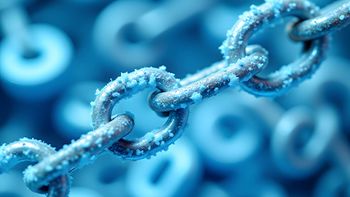
- Pharmaceutical Commerce - June 2022
- Volume 17
- Issue 3
Dealing with Dangerous Goods
The packaging and shipping of dangerous goods (DG) adds further challenges to the distribution pressures brought about by the pandemic
High demand for pharmaceutical goods existed prior to the start of the COVID-19 pandemic. Since that time, demand has only increased in tandem with increased supply chain woes. This has put pharmaceutical manufacturers under added pressure to expedite the shipment process, especially given the urgent need for safe, fast, and reliable transport of specimens, vaccines, medicines, and medical devices around the globe. Many of these are classified as DG, and, as a result, bring additional regulatory requirements and supply chain challenges.
In addition to the material shortages and shipping delays impacting businesses around the world, drug manufacturers face unique issues that make transport harder and more complicated.
Definitions and requirements
The fact that infectious substance classifications differ between countries creates a challenge for manufacturers. This is compounded by differences in packaging requirements and shipping regulations that exist between countries. Ensuring that HAZMAT shipments are fully compliant requires that the item being shipped (e.g., vaccine, specimen) and what those items are shipped with (e.g., data logger containing a lithium battery, dry ice) comply with regulations of the origin and destination countries.
Transport mode procedures
Not only do rules and requirements differ by country, but they also vary based on transportation mode. While the requirements and restrictions that work for ground shipment apply to sea as well, the complexity ramps up shipping by air. When shipping DG, you cannot simply transfer ground or sea cargo to planes because air transport is far more restrictive in terms of allowable quantities, packaging requirements, documentation, and labels. Some items cannot be shipped via air at all.
Temperature requirements
Vaccines, specimens, and pharmaceutical devices are all delicate, and all come with their own specific temperature maintenance requirements. The temperature requirements for goods sitting in a warehouse may differ from the acceptable range while that item is in transport. Shipping these materials in certain locations or by certain modes (particularly planes) increases vulnerabilities due to air pressure fluctuations and temperature fluctuations on the tarmac, although shipping by ground or boat can also impact temperature. Improper packaging could lead to heat or cold exposure outside of acceptable temperature ranges and compromise the integrity of the product.
Devices with lithium batteries
The lithium battery market has grown significantly in recent years, particularly in the pharma/healthcare industry, as many medical devices run on lithium batteries, as do temperature monitoring or location tracking devices shipped with pharmaceutical goods. The classification of lithium batteries as DG further complicates the transport process, and many shippers may be unaware that these batteries are classified as DG or the specific requirements that come with transporting them, which could lead to shipments being stopped. And just like with other DG, the rules vary by transportation mode. For example, lithium battery exceptions that apply to truck or train transport may not translate to air transport. Additionally, state-of-charge issues might also arise for manufacturers required to ship a product to end users with a specific state of charge, given that 30% is the maximum allowable for plane transport.
The importance of approved packaging
While a wide range of factors can impact the transport of temperature-controlled pharmaceutical goods, packaging plays a particularly important role. Incorrect or non-compliant packaging, labels, or markings can result in costly fines and delays. For pharma companies, delays can cause specimens and medications to be ruined, while putting patients at the end of the supply chain at risk. For this reason, consistency is critical in pharma transport. Without controls, test samples could be ruined or generate false readings, and vaccines could spoil. That’s why manufacturers must take the necessary steps to ensure every shipment, regardless of origin or destination, is kept within the correct temperature range and arrives in a certain condition.
To support consistent temperatures throughout the shipment journey, pharma manufacturers want to use the same tested and approved packaging, with specific dimensions, performance expectation, and insolation properties, anywhere in the world. But it’s important to remember that the emphasis on proper packaging doesn’t come from only individual organizations, it also comes from governing and regulatory bodies.
Mitigating the risk of shipping noncompliance
Being found non-compliant in terms of packaging, documentation, or any other DG shipping requirement can result in delays, especially when dealing with multiple supply chain partners. And in the pharma industry, delays or other shipping or handling mishaps can impact the health of those waiting for those products and the integrity of the product itself. It could also result in steep financial fines or exposure to byproducts that are harmful to the environment and people. Keep these strategies in mind to support shipping success and ensure you have the right tools, packaging, and procedures in place:
- Stay informed: Many factors impact how goods are shipped, so it’s critical to know what exactly you’re shipping, and which items are classified as DG. Be aware of the rules and regulations that govern the transport of those items (especially any shipping restrictions), and then ensure you have the proper processes and infrastructure in place to guarantee compliance across the supply chain. DG shipping regulations continue to change, so it’s important to stay up to date on any regulatory changes, both in the US and globally, and have processes in place to communicate information across your organization and implement any necessary changes within your supply chain operations.
- Partner with experts: DG shipping regulations can be complex and confusing. Consult with attorneys and compliance experts to ensure you follow the specific regulatory mandates for shipping pharma products across all transport modes—land, sea, and air. They can also assist with assessing your facilities and compliance programs to identify any gaps and better integrate compliance into other parts of your organization.
- Invest in the right packaging: Many pharmaceutical products must maintain a specific and consistent temperature, and ensure safety, as they move through the supply chain. Proper packaging is critical to ensuring these goods aren’t compromised during this process. Be mindful to use only materials that are UN-certified for DG packaging. And, if your go-to suppliers are out of stock, remember that any alternate materials you use must also meet certification requirements.
- Provide effective training: Training plays a critical role in ensuring goods are shipped safely and compliantly. Make sure all employees involved in shipping and handling DG receive the necessary training—not only to comply with training mandates but to prepare them to do their jobs correctly. Incorporating digital and eLearning tools helps train new employees remotely and are often more interactive and effective than more traditional methods.
- Create a culture of compliance: Pharma companies create and distribute products that directly impact people’s lives. That’s why it’s important to remain accountable and uphold the highest standards. Any inkling that you are cutting corners or don’t have the necessary processes in place could have a negative impact on your customers, your brand reputation, and your business.
Supply chain issues and the increased demand for pharmaceutical goods will continue. Manufacturers must expedite shipments to keep pace, but not at the cost of compliance and proper packaging. As the challenges of the past two years continue to impact daily life, quality control remains more vital than ever.
About the Author
Jay Johnson is Senior Manager for Labelmaster Services, Labelmaster.
Articles in this issue
over 3 years ago
Pharmaceutical Commerce - June 2022 Issue (PDF)over 3 years ago
Food for Thought from Franceover 3 years ago
The Impact of War on Drug Supply Chainover 3 years ago
Controlling Diabetes: Advances & Adherenceover 3 years ago
The Promise of Industry 4.0over 3 years ago
From Point-in-time to Real-timeover 3 years ago
Countdown to 2023 DSCSA Complianceover 3 years ago
The Key Steps Ahead of DSCSA D-Dayover 3 years ago
New Serialization Mandates Inch Closerover 3 years ago
Closing a Key Gap in DSCSA ComplianceNewsletter
Stay ahead in the life sciences industry with Pharmaceutical Commerce, the latest news, trends, and strategies in drug distribution, commercialization, and market access.





